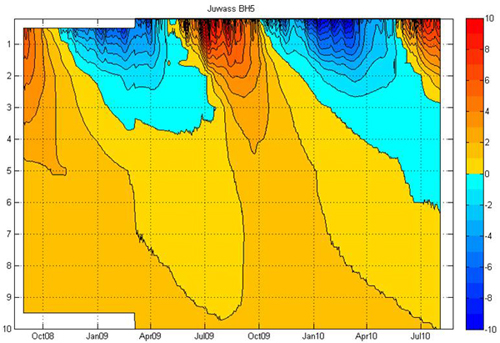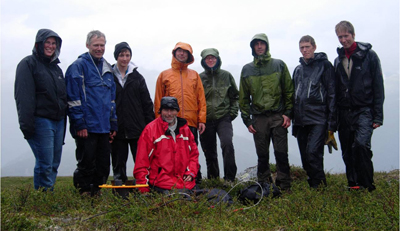In addition to the field work, parts of the CRYOLINK team, as part of the project group in the Climate Partk 2469, took part in guiding the Minister of the Environment of Norway, Erik Solheim, around at Juvvass. Solheim showed great concerns regarding impacts of climate changes and the fate of permafrost in the mountains of Norway.
The winter 2009-2010 had in southern Norway lower air temperatures and less snow than the previous winter. Hence, at most CRYOLINK boreholes there has been an enhanced frost penetration in the ground (see figure). This may be balanced, however, by the rather warm summer 2010.
 Evolution of ground temperature in a non-permafrost borehole at Juvvass, 1468 m a.s.l. (Juv-BH5). The thickness of seasonal frost is considerably greater than the previous year due to lower air temperatures and less snow this winter. At the time of writing (August 10, 2010) the ground at this site is still frozen at 3-6 m depth. This borehole may have experienced permafrost in the near past.
Evolution of ground temperature in a non-permafrost borehole at Juvvass, 1468 m a.s.l. (Juv-BH5). The thickness of seasonal frost is considerably greater than the previous year due to lower air temperatures and less snow this winter. At the time of writing (August 10, 2010) the ground at this site is still frozen at 3-6 m depth. This borehole may have experienced permafrost in the near past.
